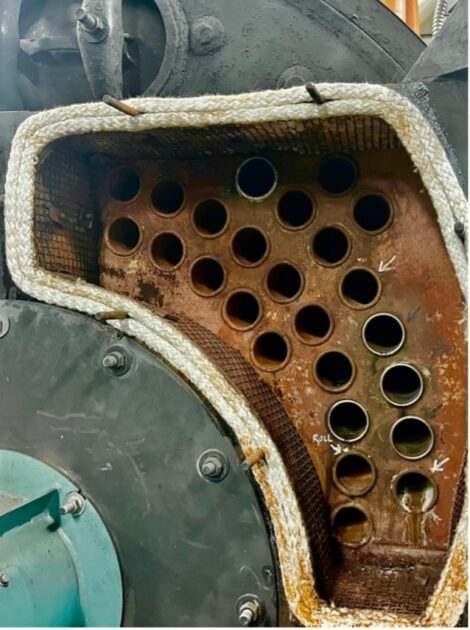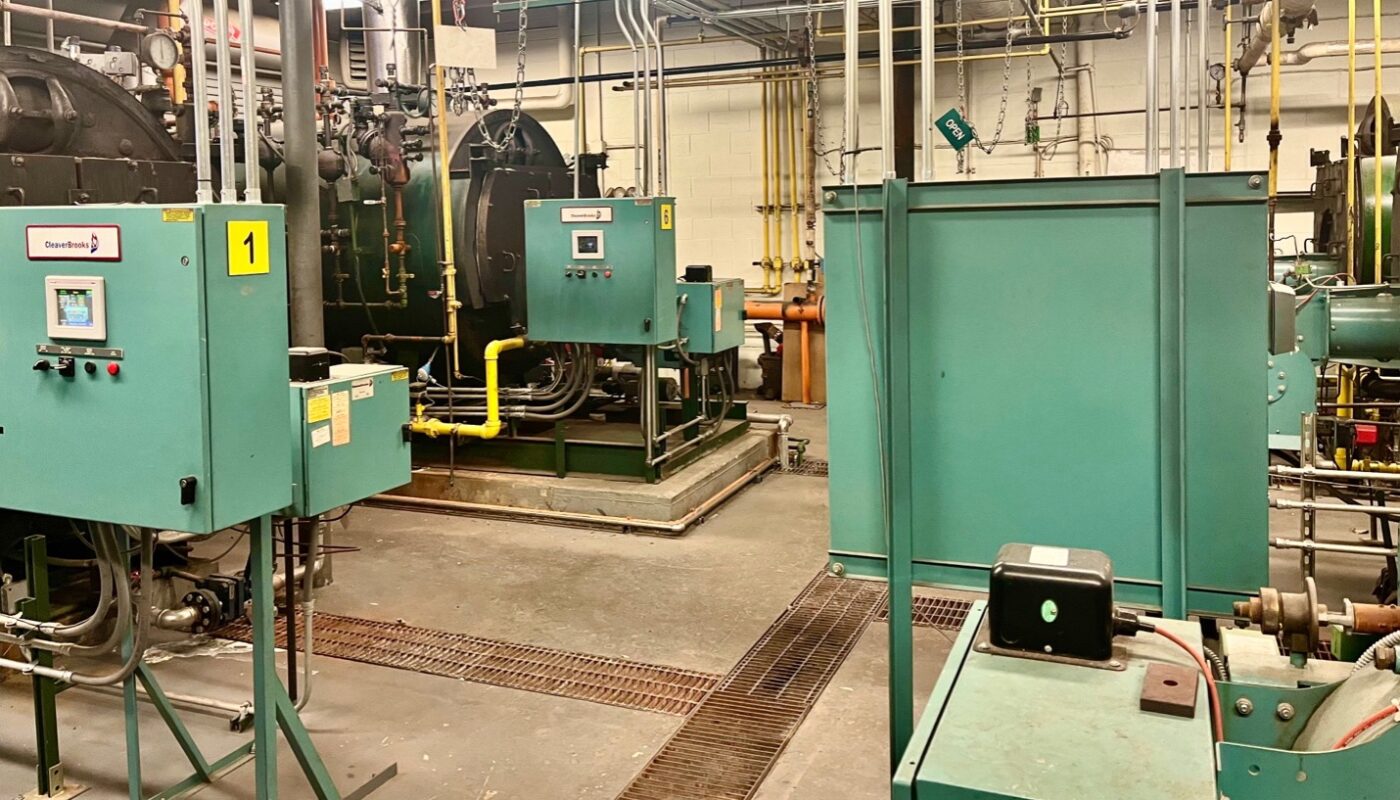The boiler room in the central heating plant distributes heated water all across campus.
Photo by Adrian Suppes
The university heating and cooling system is an old boiler system that requires constant maintenance.
Universities are required to provide heat and hot water to many sources, so a functional system is needed. The boiler systems that provide the heat and hot water are not complex. These systems work by heating water within a vessel using oil, gas or coal. The heated water is either turned into steam or kept as a liquid, and is then sent through a system of radiators to provide indoor heating and warm water.
Since heating a university is more complex, there are a few types of heating systems that can be used. These include electric panel heaters, furnaces, gas central heating, hot water radiators, storage heaters and underfloor heating systems. The university uses a water tank system to heat the campus.
A water tank system operates efficiently and effectively. Hot water circulates through coils in a valance unit, mounted near a ceiling, and in radiators in some buildings. The coils heat the air, which radiates outward into the room through the natural convection process.
“You never know everything,” said Steven Kinsinger, associate director of plant operations at the university.
The university uses a water heating system in all buildings on campus apart from Saylor-Ackermann, which uses a steam heat system with radiators.

All the buildings on the primary campus are heated through six boilers in the heating plant next to the Conservatory of Music. The hot water travels through tunnels underneath the campus which in turn circulates through all the major academic buildings and residence halls.
The College Avenue suites and neighborhood houses all function on their own individual boiler systems.
The 6 boilers in the heating plant were installed in 1973 and the individual systems in the buildings were installed “over the ‘30s, ‘40s, ‘50s and ‘60s,” Kinsinger said. “I mean, the range is all over the place for the ages of the systems.”
“It’s (the maintenance) all the same thing, for the most part, it’s just newer products versus older [products],” Kisinger said.
Cotterman has one of the newest systems, having been installed two years ago.
“It’s pretty much constant maintenance,” Kinsinger said.
The constant maintenance includes regularly servicing the primary boilers that are placed under intense pressure, regularly replacing pipes and routinely inspecting the systems.
While the systems are old, there are no current plans to replace them.
“In my time now, we won’t change it,” Kinsinger said. “It’s (the heating system) very efficient as far as how we’re doing it.”
“We’ll take a bite of each one (building) and try to manage it (maintenance) as best we can,” Kinsinger said.
This process is done with only three employees amid budget cuts.
The most intense time for the staff in charge of the heating and cooling systems is the change of seasons. Facilities will monitor the weather for a prime to switch their system, as they cannot switch it back once they do.
The process of switching from cooling to heating and vice versa is one that takes three days. The change has to be gradual because rapid and drastic changes of temperature will cause irreparable damage.
Steam radiation, as found in the Saylor-Ackermann building, poses no fire risk to buildings or students, as there is no form of ignition that could release and cause damage. Close contact to these radiators can cause skin burns and other damages, as well as melt plastics.
Large-scale boilers pose little safety risk, as they are generally designed to have redundancies to prevent damages to the units.
A bill passed in 2009 called ASME CSD1 requires that any issues found during routine inspections must be corrected immediately, and the systems cannot operate unless they are repaired.
Water-based heating systems also have benefits over steam-based counterparts when it comes to safety of use. Unlike steam, water-based heating does not experience “water hammering,”an over-pressurization, which can cause pipes to rupture or corrode. There is a greater variability in temperature with water systems, which prevents harm due to major swings in use of heat.
Water-based systems do not need to monitor their use of new water as often, as they experience minimal water loss, where a majority of accidents may occur for steam or heated air systems. Most accidents, at least for steam radiation, occur when providing more water into the system, which is required for the process to function.
The university also features a low-emission form of heat system as opposed to other campuses, which burn high amounts of coal or oil, possibly releasing dangerous chemicals like nitrous oxide or mercury into the air.



